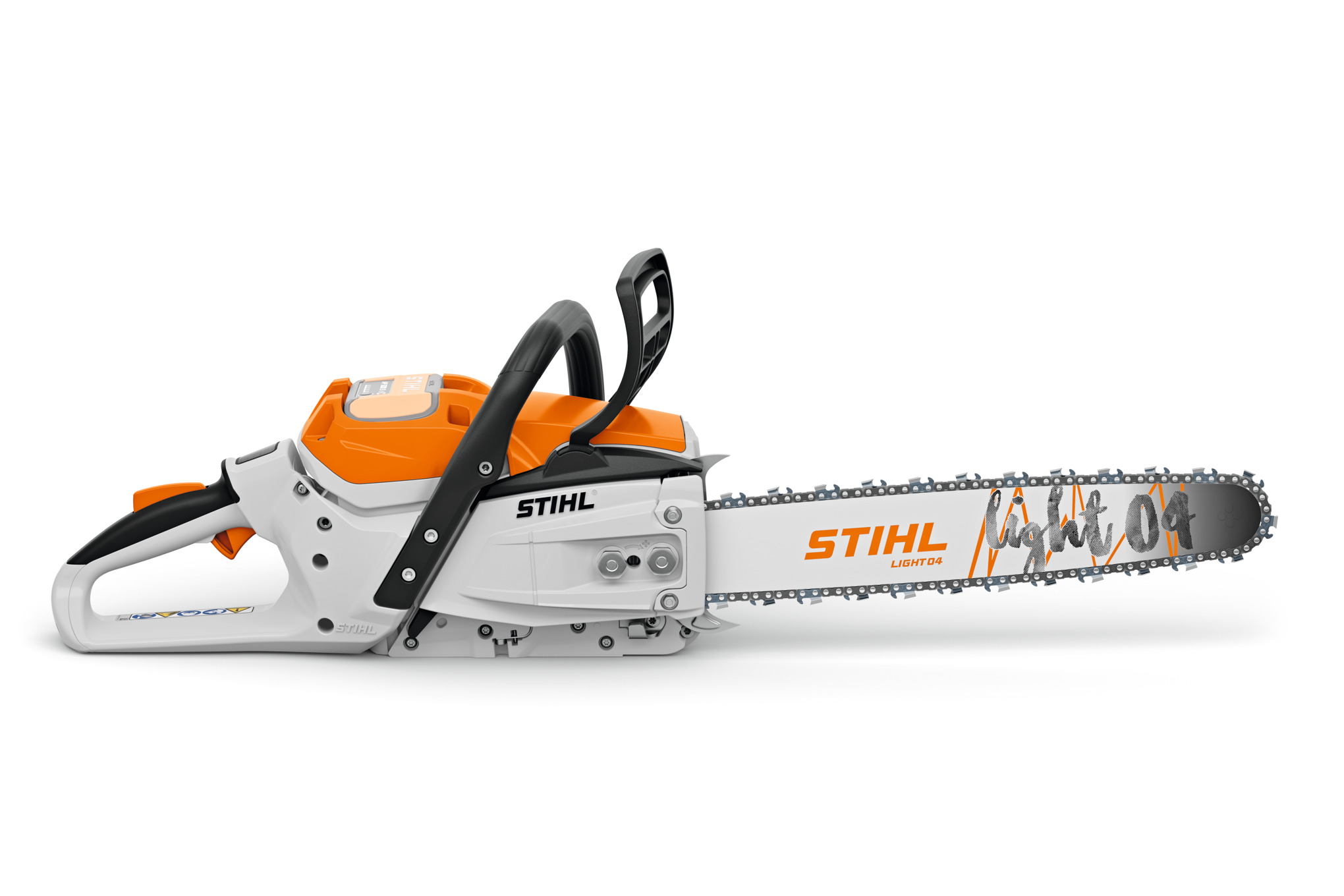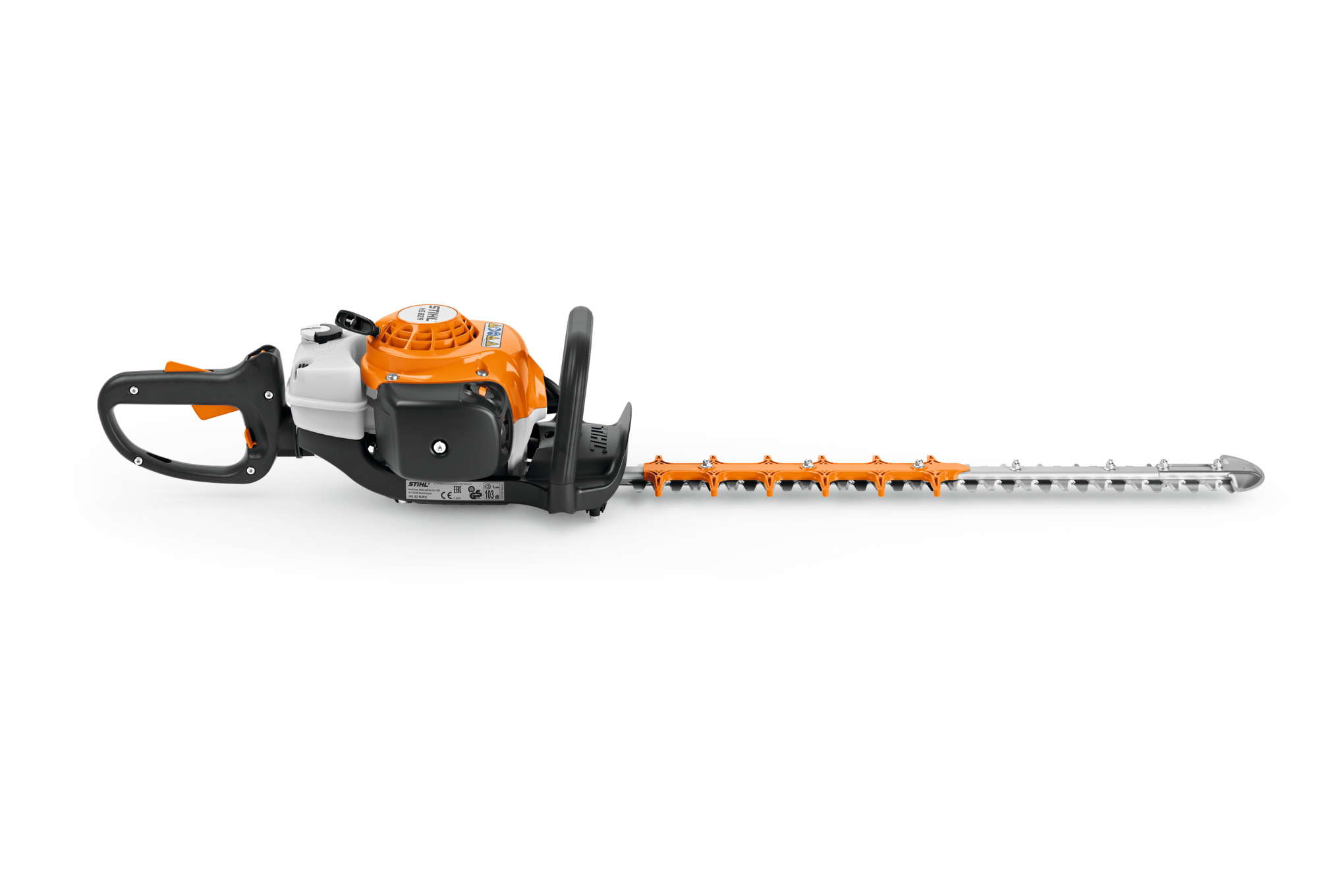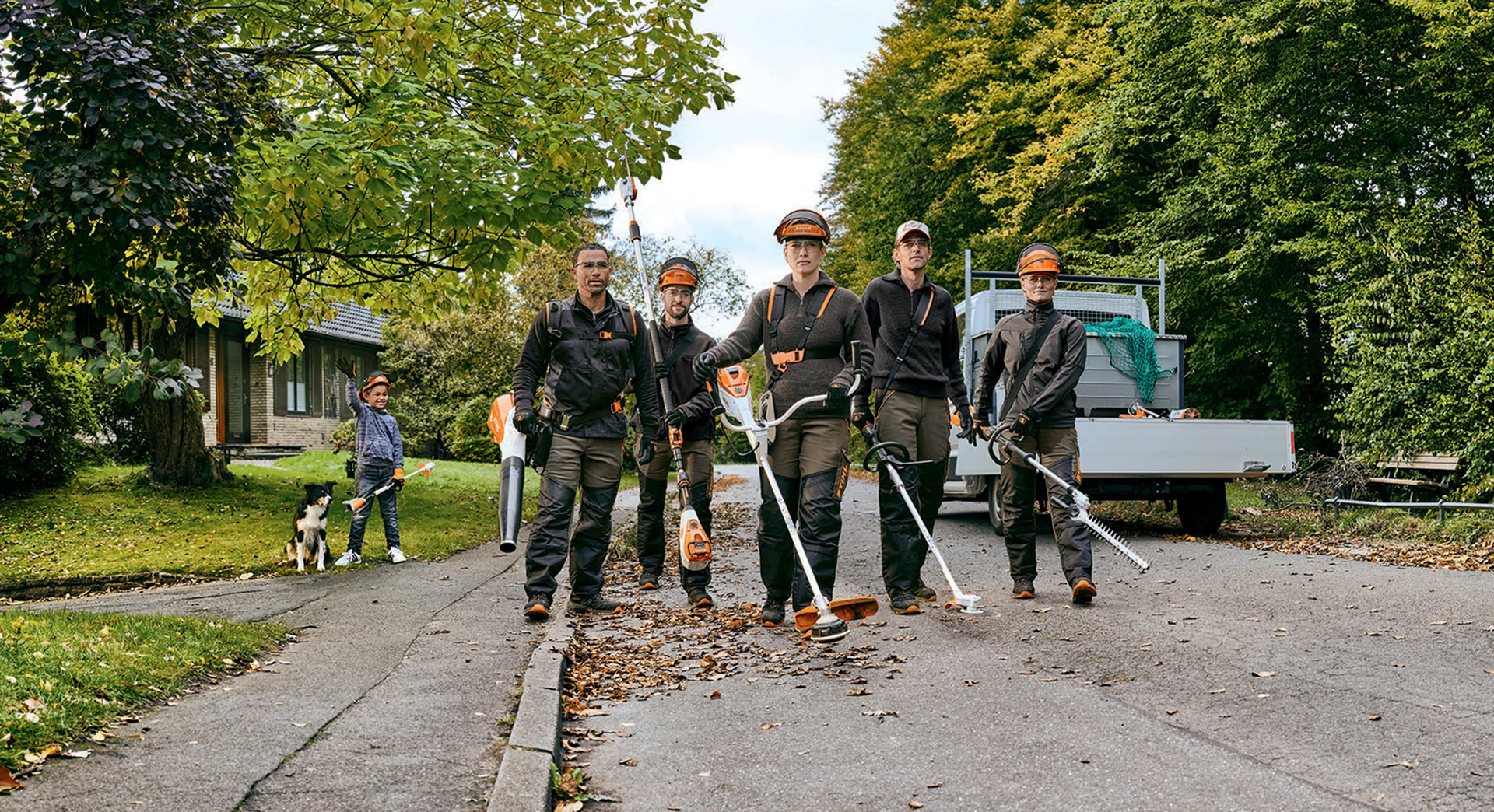STIHL anti-vibration systems: healthier and more precise work
Anyone who works with power tools for long periods of time will appreciate an anti-vibration system (AV system). We present it to you in detail here.
12.09.2024
Overview: Anti-vibration system
- Decoupling of the device handles from the drive train for reduced vibration
- Complex interplay of buffer and spring elements in the AV system
- Ideal for low-fatigue work that is gentle on the muscles, e.g. in forestry, gardening and landscaping, and construction
- Different requirements for petrol, battery and electric power tools
- AV system is an important part of compliance with occupational health and safety guidelines
What does an anti-vibration system do?
The design and effect of the anti-vibration systems are basically the same in all STIHL power tools: the anti-vibration system decouples the device handles from the drive train for reduced vibration. It also serves to comply with occupational health and safety standards, which deal specifically with vibration exposure.
The STIHL anti-vibration system is a finely balanced system in which the components of the drive, handles and AV elements (made of steel, rubber or the combination of both) are perfectly matched. The following rule of thumb applies: while soft AV systems can provide excellent isolation from vibrations, they can sometimes have an unwanted effect on how the device is handled. The tool behaviour is therefore optimised by computer for each device in real tool operation.
At STIHL, we always focus on customer needs and benefit from our many years of experience. In this way, we always make commercially viable anti-vibration systems.
The heart of the anti-vibration system
Buffer and spring elements are at the core of every anti-vibration system. They are either made of rubber, steel or a combination of both. At STIHL, individual adjustments to the required structure are possible – we combine our spring elements with a complex stop system consisting of rubber and hard foam buffers.
Anti-vibration systems for different drives
STIHL power tools are either gas, electric or battery-powered. The requirements for the anti-vibration system installed in the device vary depending on the type of drive.
Gas-driven power tools from STIHL (and all other manufacturers) are driven by the combustion of fuel in the combustion chamber. This combustion sets the piston, connecting rod and crankshaft in motion. These moving parts are oscillating masses whose back and forth movements transfer to the device casing and thus also to the points on the handle where the device operator holds said device.
If a certain speed (known as the engagement speed) is exceeded, the rotational movement of the crankshaft is transmitted to the tool (for example, the cutting wheel of a cut-off machine, the saw chain of a chainsaw or the mowing blade of a clearing saw ), which leads to additional vibrations.
These movements plus any imbalances on the device, as well as the reaction of the tool through its interaction with the workpiece and the environment, generate a vibration spectrum that can be kept away from the device operator by the AV system used.
Battery power tools and electrical power tools are powered by an electric motor that does not require the oscillating masses that are found in petrol engines. Here, the vibrations are primarily caused by the movement of the tool, possible imbalances and interaction with the workpiece and the environment. Therefore, the use of an anti-vibration system also makes sense for battery-powered devices.
STIHL professional power tools with AV system

With the MSA 300, the AV system protects muscles and joints.
Chainsaws with AV in forestry
Precise handling is important when it comes to forestry work. That’s why all petrol-driven STIHL chainsaws feature an AV system.
The AV system in the STIHL MSA 300 battery chainsaw also protects muscles and joints when felling, pruning or cutting small and medium-sized trees.

The STIHL HS 82 hedge trimmer allows you to work with minimal fatigue.
AV devices for horticulture and landscaping
High-torque engines ensure rapid progress in horticulture and landscaping. Power tools with the AV system reduce engine vibration and thus ensure low-fatigue work, for example with the STIHL FS 411 clearing saw,the STIHL BG 86 leaf blower or the STIHL HS 82 hedge trimmer.

The AV system decreases engine vibrations in the cut-off machine.
AV tools – construction use
Precise cuts through concrete, asphalt, stone, structural steel or pipes are achieved with the STIHL TS 410 gas-driven cut-off machine. Its AV system significantly reduces the transmitted engine vibrations – for effortless work even during longer periods of use.
Anti-vibration systems in STIHL tools: a selection
In STIHL chainsaws, the front and rear handles are decoupled from the engine by the anti-vibration system. Vibrations from the sawing process are also decoupled by the AV system. This design can be found in all gas-driven chainsaws from STIHL.
There are various anti-vibration systems in our clearing saws that make the tools better to work with. You will find both systems that decouple the handle from the motor and systems where the handles and the shaft are decoupled from the motor.
The anti-vibration systems in STIHL gas-driven cut-off machines are similar to the systems in chainsaws.
Hand-held gas-driven leaf blowers from STIHL do not have an anti-vibration system. Large power tools feature one that is similar to the anti-vibration system in cut-off machines and chainsaws.
Gas-driven professional hedge trimmers from STIHL feature an anti-vibration system – the new, battery-powered HSA 07/06 no less. In hedge trimmers, the use of an anti-vibration system not only prevents vibrations, but also has a positive effect on the tool's noise level.
Anti-vibration systems and occupational health and safety guidelines
What an anti-vibration system means for tool operators is relatively clear: more comfortable operation of the device. But anti-vibration systems are also an important element of occupational health and safety for employers. The EU Vibration Directive defines upper limits for vibration levels.
These can be adhered to using various methods: either over a maximum permissible daily working time with the device or by falling below a vibration limit, which enables the device to be used without a time limit. An anti-vibration system therefore serves to fulfil the vibration guidelines for the daily running times relevant to professionals.
The STIHL anti-vibration system: origins
Our anti-vibration system can be found in all STIHL power tools where high vibrations occur due to the drive system. This applies to many power tools, from chainsaws to clearing saws,cut-off machines and hedge trimmers. However, what today ensures maximum comfort and health protection for many STIHL power tools has its origins in a chainsaw.

More specifically, in the now legendary STIHL Contra. When it was launched in 1959, it was the first saw that could be used to both fell and prune trees. But what was not really clear to anyone at the time of its introduction was that the high vibrations of the tool during regular use and in particular in combination with cold could lead to severe circulation problems in the user’s fingers – known as white finger disease.
To remedy this situation, STIHL began researching and developing an anti-vibration system for chainsaws, which was patented in 1964.

This anti-vibration system was characterised by the decoupling of the handles from the engine via rubber elements. One year later, the anti-vibration system was already standard equipment in the new STIHL Contra, and in 1967, the 041AV chainsaw was also available with a fully integrated handle frame anti-vibration system. It consisted of a cast magnesium part comprising a carburettor and air filter, to which the rear handle was attached. This AV system was developed very quickly and, with some adjustment, transferred to other product groups.
By the way, white finger disease is no longer a typical disease for forestry workers today, thanks to the combination of heated handles and anti-vibration systems in STIHL power tools.




